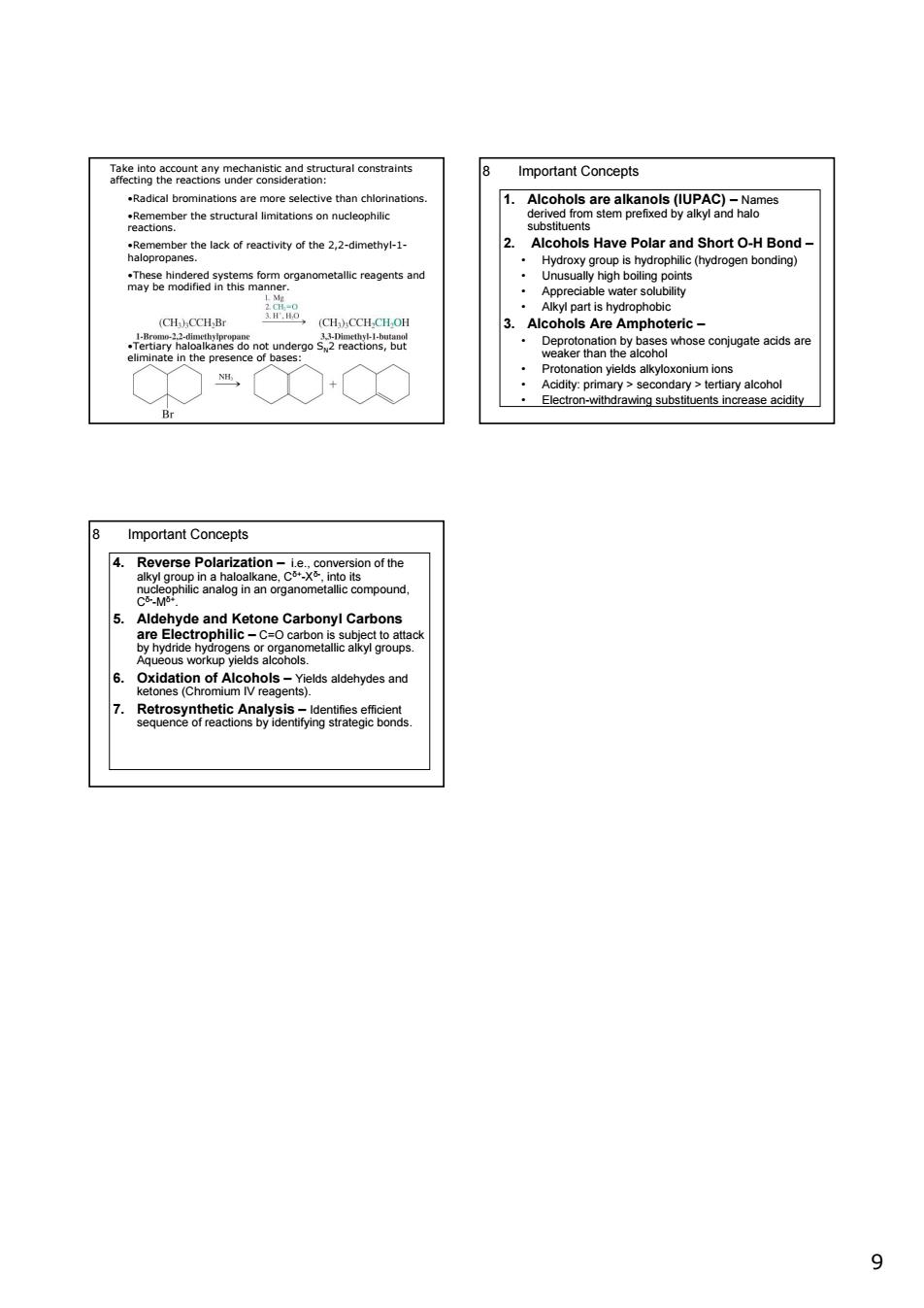正在加载图片...

Important Concepts 1.Alcoholsar lkan the lack f reactty ofthe 2. .. (CH)CCH,Br 益, 3.Alcohols Are Amphoteric- um ions 8 Important Concepts 6. 9 9 Take into account any mechanistic and structural constraints affecting the reactions under consideration: •Radical brominations are more selective than chlorinations. •Remember the structural limitations on nucleophilic reactions. •Remember the lack of reactivity of the 2,2-dimethyl-1- halopropanes. •These hindered systems form organometallic reagents and may be modified in this manner. •Tertiary haloalkanes do not undergo SN2 reactions, but eliminate in the presence of bases: 8 Important Concepts 1. Alcohols are alkanols (IUPAC) – Names derived from stem prefixed by alkyl and halo substituents 2. Alcohols Have Polar and Short O-H Bond – • Hydroxy group is hydrophilic (hydrogen bonding) • Unusually high boiling points • Appreciable water solubility • Alkyl part is hydrophobic 3. Alcohols Are Amphoteric – • Deprotonation by bases whose conjugate acids are weaker than the alcohol • Protonation yields alkyloxonium ions • Acidity: primary > secondary > tertiary alcohol • Electron-withdrawing substituents increase acidity 8 Important Concepts 4. Reverse Polarization – i.e., conversion of the alkyl group in a haloalkane, Cδ+-Xδ- , into its nucleophilic analog in an organometallic compound, Cδ- -Mδ+. 5. Aldehyde and Ketone Carbonyl Carbons are Electrophilic – C=O carbon is subject to attack by hydride hydrogens or organometallic alkyl groups. Aqueous workup yields alcohols. 6. Oxidation of Alcohols – Yields aldehydes and ketones (Chromium IV reagents). 7. Retrosynthetic Analysis – Identifies efficient sequence of reactions by identifying strategic bonds